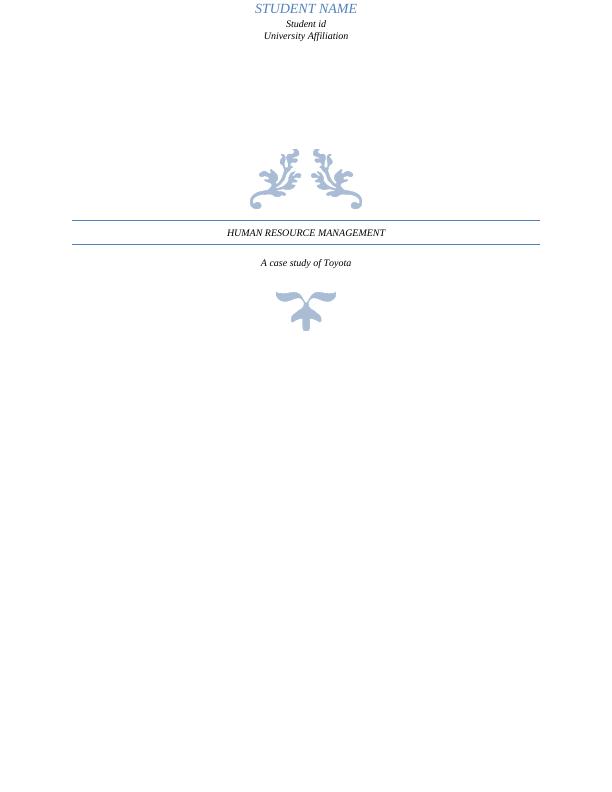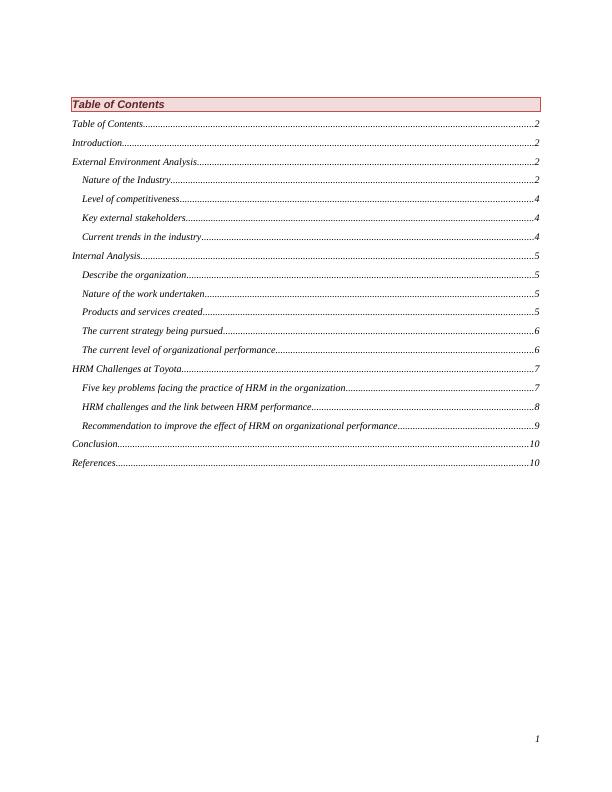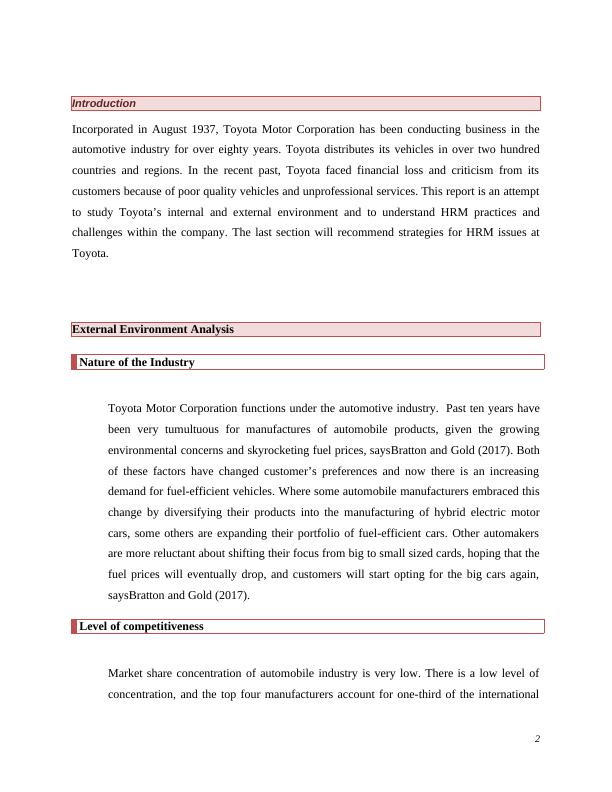A Case Study of Toyota: HRM Challenges and Recommendations
Understand the relationship between performance management and other HRM processes, describe the general objectives of performance management programs, discuss the primary performance measurement methods, describe the types of errors that arise in performance measurement, identify the different approaches to performance review meetings, recognise the complexities of the disciplinary process and potential implications relating to this process.
Added on 2023-01-23
About This Document
A Case Study of Toyota: HRM Challenges and Recommendations
Understand the relationship between performance management and other HRM processes, describe the general objectives of performance management programs, discuss the primary performance measurement methods, describe the types of errors that arise in performance measurement, identify the different approaches to performance review meetings, recognise the complexities of the disciplinary process and potential implications relating to this process.
Added on 2023-01-23
End of preview
Want to access all the pages? Upload your documents or become a member.




